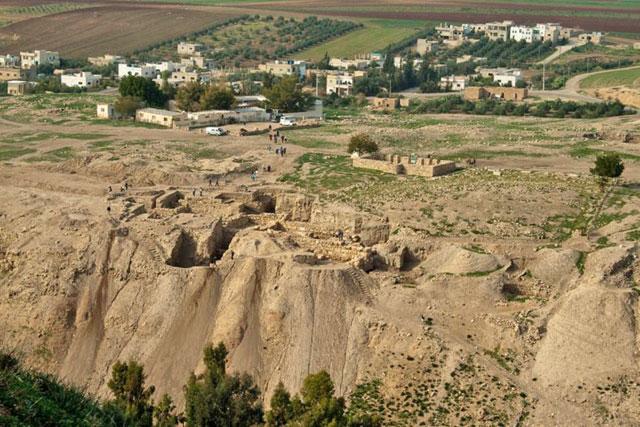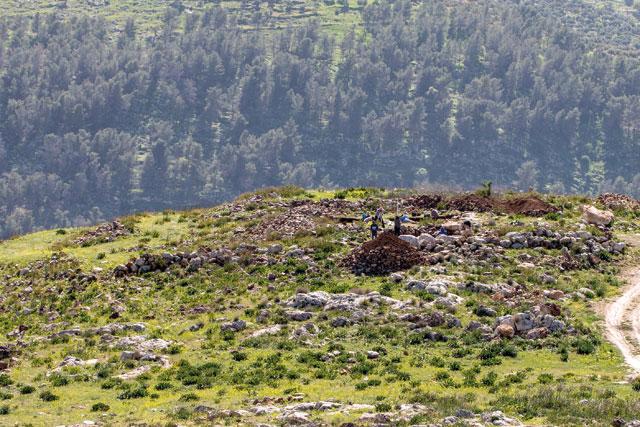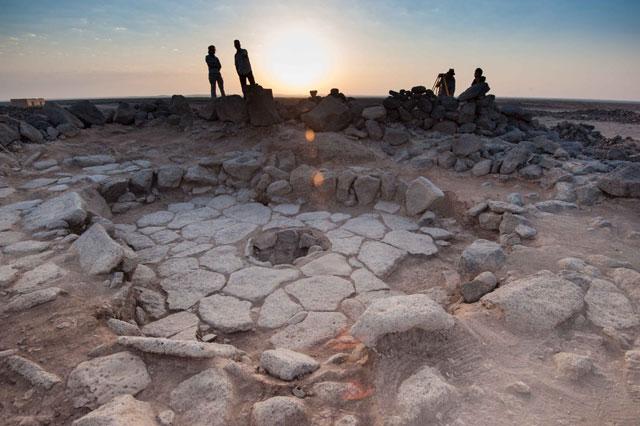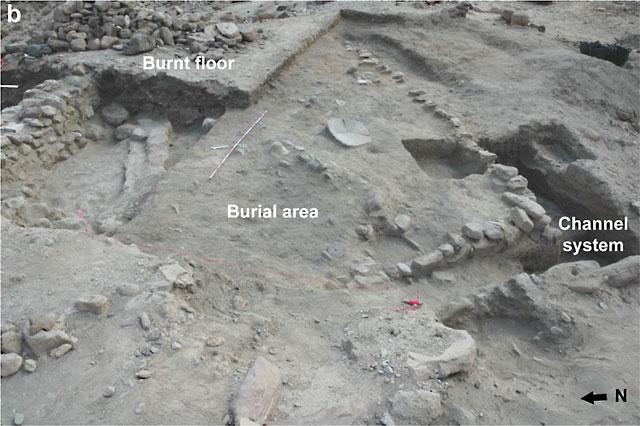You are here
Scholar studies ancient Pella inhabitants through olive exploitation history
By Saeb Rawashdeh - Jul 10,2018 - Last updated at Jul 10,2018

The aerial view of Pella where olive oil and olives were an important part of the daily diet as early as 6,200 BC (Photo courtesy of Anne Dighton)
AMMAN — The archaeobotanical archive from Pella provides an "extraordinary record through time" of approximately 8,000 years of almost continual exploitation of plants by Pella's inhabitants, Anne Dighton from The University of Queensland, Brisbane says.
The archive allows researchers to track change through time and examine the social and economic role of plants at key transitional periods, Dighton told The Jordan Times in a recent interview.
"I am very grateful to have been given the opportunity to analyse the archaeobotanical archive from Pella that is material from several decades of careful soil sampling at the site," the scholar said.
"Olives and olive oil have been a significant part of the daily diet of people in this part of the world for millennia. What we had not realised was just how far back this might have been the case," Dighton said, adding that excavation and analysis to date has shown that olive was being exploited in Jordan from as early as approximately 6,200 BC.
"This is exciting as it is among the earliest evidence in the world for significant exploitation of olive and is much earlier than has traditionally been thought. Finding out more about the form of this very early exploitation is one of the things that I intend to investigate in my doctoral research," Dighton explained.
Moreover, there is also a view that olives were not growing naturally in the Pella environs at this time, and yet, there are significant quantities of olive material in occupation deposits at the site dating to this early period, the archaeologist added.
"To try and shed some light on this, one of the methods I will use is the analysis and identification of the wood charcoal from the site. In addition to helping us gain a better understanding of the palaeoenvironment through time generally, wood charcoal analysis will allow us to determine whether olive wood is present in the Late Neolithic phases at Pella," Dighton underlined, adding that this will help scientists understand whether the olive remains are exploitation of locally occurring trees, or whether the olives were brought in from elsewhere.
The regional olive oil trade in the Bronze Age is still an unsolved puzzle:"It's not clear how significant any potential olive trade or export at Pella might have been in the Bronze Age. My earlier research indicated that, while olives were being exploited from the Late Neolithic onwards, it was only during the Bronze Age that we see a recognisable signal suggestive of domestication of olives at Pella."
This took the form of a significant change in size and size variation in the olive endocarps, or pits, indicating intensified exploitation leading to domestication, she explained.
She will be testing this theory further to see whether the changes we see in settlement patterns at Pella that indicate a population increase at the site during this time might be linked to the morphological change we see in the olives.
"It's possible that the reason we see the domestication signal during the Bronze Age is that this represents an intensification of olive exploitation through the development of olive groves. Again, in addition to analysis of the olive remains themselves, wood charcoal analysis may prove key to understanding the more intensified exploitation of olive that we believe occurred, possibly in the Middle Bronze Age, by tracking changes through time in woodland vegetation composition," the scholar said.
However, it is also possible that the ongoing analysis of recently-excavated Late Neolithic-Early Bronze Age samples may provide results that suggest domestication occurred much earlier and more in line with the significant olive exploitation we see in those earliest periods of occupation at Pella, Dighton underscored.
Related Articles
AMMAN — An enclosure wall that protected three buildings at Khirbet Um Al Ghozlan in Wadi Rayan, some 14 kilometres west of Ajloun, in
AMMAN — Excavations at Shubayqa 1 — a hunter-gatherer site dated to between 14,600 to 11,700 years old — by a team of archaeologists from th
AMMAN — Sharara is a Neolithic settlement located 10 kilometres east of the southern tip of the Dead Sea, in Wadi Hasa, and provides a route

















